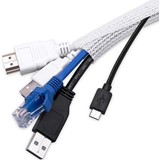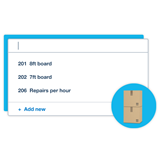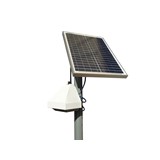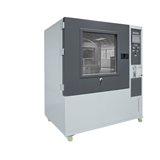By embracing improved environmental and waste management companies can:
- reduce waste production and discharge
- eliminate or reduce waste disposal costs
- improve storage and handling practices
- increase production efficiency
- improve worker health and safety
- improve company image.
Stage 1: Achieving commitment
The first step in adopting a strategy to reduce waste is to obtain company commitment. The commitment to meet high standards of environmental as well as operational performance must be shared by all members of the organisation from the chief executive officer down. Including all staff in the development of the strategy will ensure they have a sense of ownership.
A statement of policy or objectives should be developed and displayed prominently around the company and throughout the plant.
Stage 2: Planning
Allocate clear responsibility for the development of the strategy to a person who has credibility with those involved and who has the full support of company management.
Appoint a study or audit team involving all areas of the business. Don’t assume that you will be looking at engineering or process solutions to problems. Involving a multi-disciplinary team on a problem can assist in the identification of simple low cost solutions or improvements.
The team should be tasked with identifying what shape the company is in. The company needs to have a clear view about the desired level of performance and where it sits between compliance and best practice.
An important challenge for all businesses, regardless of size is to stay lean and profitable and run clean. Businesses must ensure that wastes generated from the manufacturing process are minimised and disposed of appropriately.
Step 1: Check your waste line - assess current situation.
Step 2: Set your waste line - establish your strategies and goals.
Step 3: Watch your waste line - monitor and audit your waste.
Step 4: Reduce your waste line - continuously improve your environmental performance.
Implementation
Assess current performance:
Are there obvious practices that are generating waste or inefficiencies?
Can you spot leakages?
What procedures do you have to identify and capture environmental risks?
What are you actually throwing away? Look into the skips - you may be surprised to find out what is being turned into waste.
Discuss the findings amongst your team. Speak to your employees - they may know of problems that aren’t obvious to you, and they may also be able to suggest quite viable options for resolving them.
Set a timetable for managing improvements which is appropriate to the nature of your business. Implement a reporting mechanism to enable the company to chart progress and to document performance. It is useful to tackle business operations in terms of "Inputs", "Process" and "Outputs".
"Inputs"
Key questions to ask and points to consider include:
What comes into your system and how does it come? Identify and quantify your inputs
Are you importing waste into your system and incurring unnecessary disposal costs? For example, can you eliminate packing all together by having materials strapped?
If raw material inputs are causing difficult waste problems, have you considered alternatives? For example, replacement of oil based materials with water soluble ones which will reduce waste disposal problems and charges.
How are inputs stored and are procedures in place to minimise environmental damage through spillage or leakage?
There is potentially waste in the office. Examine opportunities for use of recycled paper and double-side printing and photocopying.
Don’t overlook the consumption of gas, electricity and water. These can often be accessed by individual operators without accountability.
"Process"
Key questions to ask and points to consider include:
Are you able to identify all leakages from the system? You can’t fix them if you don’t know where they are.
Do you have a system of planned inspections of all pipes and valves and other parts of the process such as conveyors, vats, workbenches, drums and storage areas.
Having identified leakages from your current system, what scope exists for improvements? It is far better to eliminate waste by prevention at source - through what is known as cleaner production - or to reuse or recycle waste from the process, than to have to treat or dispose of it. Waste treatment - so called end-of-pipe solutions - and disposal normally cost significantly more and the costs are continuously rising.
"Outputs"
Is your product packaging creating waste for your customers? If so, look at alternative methods of packaging.
When your organisation has reached the stage where the generation of waste has been minimised but there is still waste which does require treatment or disposal, there are some basic principles to follow:
1. Keep your waste streams separate - it makes handling much easier and decisions a lot more simple
2. Concentrate your waste - large volumes are more cost effective to handle and may be useful to someone else as a resource
3. Ask whether the company has explored opportunities available to make money out of its waste.
Best business practice
A sound environmental management system employs many of the commonly accepted practices associated with total quality management or quality assurance. Australian standards have been developed to guide companies in the development and implementation of quality management and assurance schemes - the AS 3900 series.
ISO 14001 is the standard for Environment Management Systems.
If your company has accreditation under these systems, you will already have a good framework for introducing an environmental management and audit scheme. If you do not, then starting this process will set you on the path which leads to best practice.
Australian Industry Group












